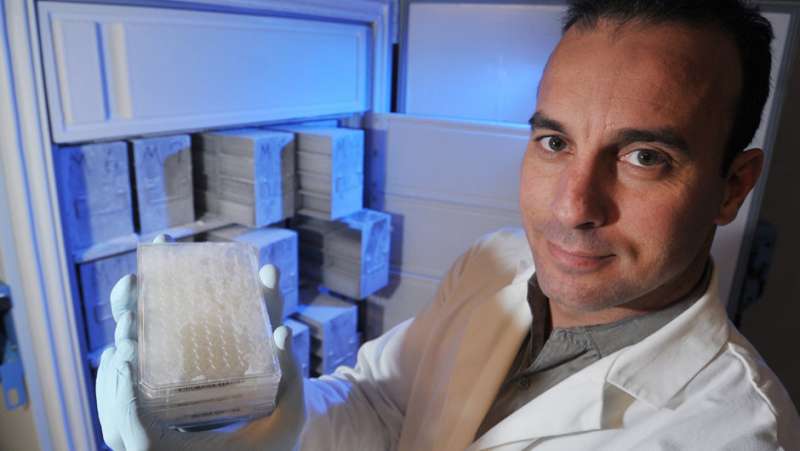P53 'master switch' remains top target in gene signaling network controlling cancer

There are two important categories of genes involved in cancer development, oncogenes and tumor suppressor genes. When oncogenes gain function, e.g. through mutation, they actively promote cancer - drugs that turn them off have proven effective in many cancer types. On the other hand, tumor suppressor genes work against cancer. When they lose function, cancer is left to grow.
The most important tumor suppressor is the protein p53. The gene coding p53 is mutated in about 40 percent of all cancers, and the remaining cancers frequently find other ways to inactivate its functions.
"Inactivation of the p53 gene or shutting down the p53 protein is a key step in tumor development," says co-author Matthew Galbraith, PhD, investigator at the University of Colorado Cancer Center and instructor in the Department of Pharmacology at the CU School of Medicine. "People are using drugs to turn p53 back on again, but so far they haven't worked very well."
In light of this challenge, a CU Cancer Center study published in the journal Genome Research asks an important question: "Is there another gene or some kind of 'second in command' that p53 relies on for its tumor suppressor function? If so, maybe even if we lose p53 by mutation, we could activate that second in command to regain tumor suppressor function," says Zdenek Andrysik, PhD, first author and also an instructor in the CU School of Medicine Department of Pharmacology.
The thing is, p53 doesn't work on its own. Instead, it is a "transcription factor" that works like a master switch activating other genes. Andrysik describes it as being a bit like the Federal Emergency Management Agency, "coordinating the efforts of others. Similar to FEMA, p53 responds to various kinds of cellular emergencies - not hurricanes but disasters like DNA damage, nutrient deprivation and viral infection. p53 activates genes that pause cell proliferation while trying to repair damage - and if the damage is beyond repair, p53 launches cell death. With this study, we were trying to find out which of the genes under p53's command are really key for tumor suppression."
The first step in this search for an essential second-in-command was identification of all genes activated by p53. If another gene was essential to p53 function, it would be found in this list. By combining four genome-wide techniques in three different tumor types, authors gained unprecedented insight in the multi-level network of genes regulated by p53. Now the question was which gene or genes in this list contribute to p53's anti-proliferative function of p53, a crucial task in tumor suppression.
Anna Guarnieri, PhD, post-doctoral researcher working in the lab of senior author Joaquin Espinosa, PhD, used a system that evaluates cells each with one gene silenced.
"With p53 turned on, if there was another gene that was crucial for its anti-cancer effects, cells with this one gene turned off would keep proliferating as if nothing happened," Andrysik says.
Despite silencing over 300 genes regulated by p53 across cancer types, the group found no essential second in command. The group confirmed their finding by analyzing the genomes of more than 4,000 patient-derived tumor samples.
"If there was one gene so important to p53's tumor-suppressive function, we would expect to see this gene frequently mutated in these samples, like p53," Andrysik says. Supporting the group's initial finding, there was no gene in this p53 network mutated nearly as often as p53 itself.
"Rather than a single 'rescue worker' saving an entire city, p53 activates a multifunctional, robust team of genes contributing to tumor suppression," Andrysik says.
However, this negative finding isn't necessarily negative. "This refocuses attention back onto p53 itself," Galbraith says. "While p53 remains a promising target for therapy, this study shows us that we need to activate p53 itself and not something downstream."
"People have always been after the silver bullet against cancer and there are few things that are as relevant across cancer types as p53. Now the question is what is the best approach to harness it," says senior author Joaquin Espinosa, PhD.
More information: Zdenek Andrysik et al, Identification of a core TP53 transcriptional program with highly distributed tumor suppressive activity, Genome Research (2017). DOI: 10.1101/gr.220533.117




















